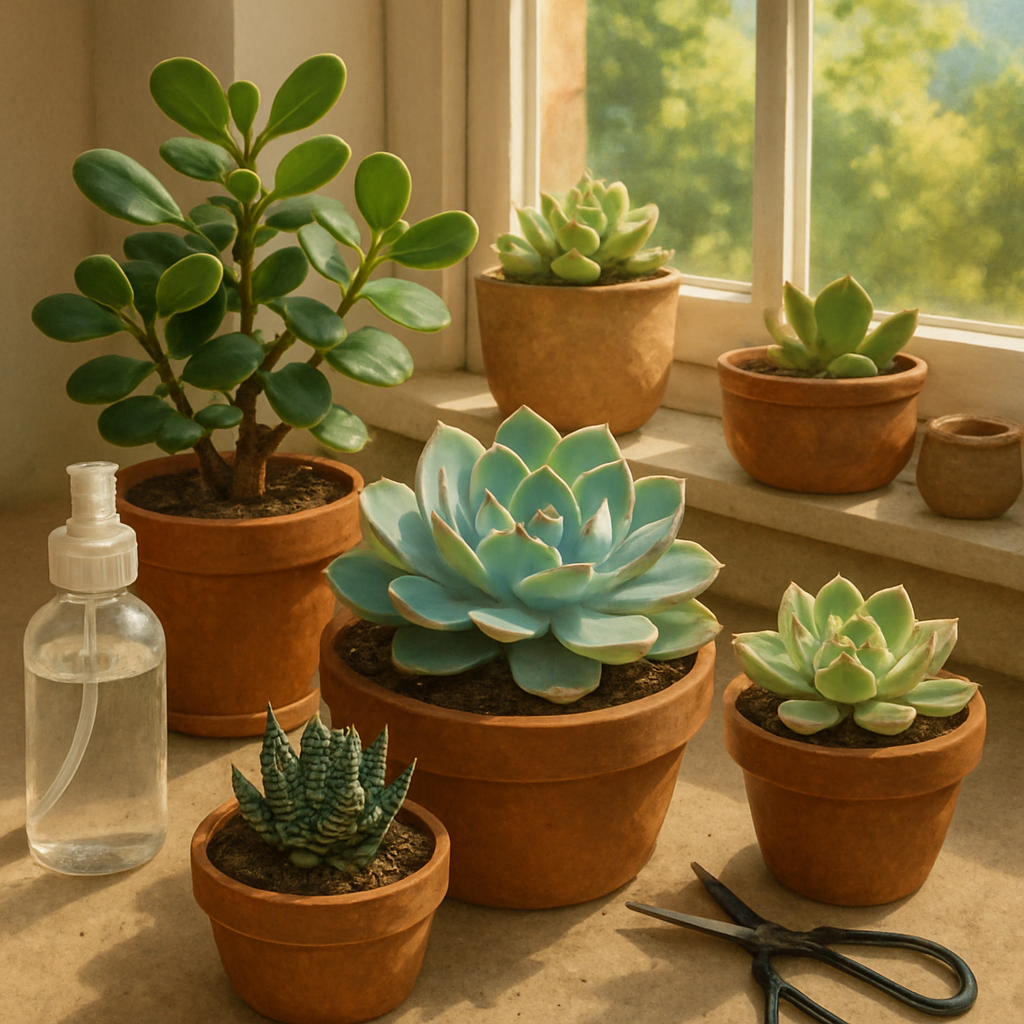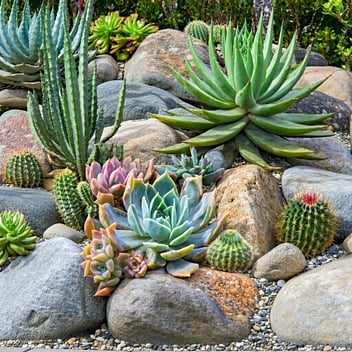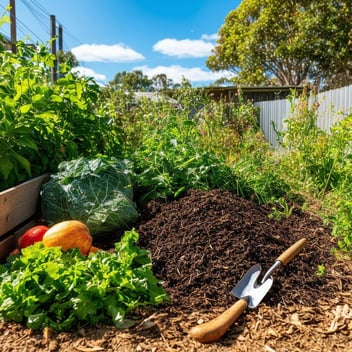Successful Propagation of Succulents in SEQ Conditions
Introduction
Succulents have captured the hearts of gardeners and houseplant enthusiasts alike, and it’s easy to see why. They are resilient, water-storing gems that thrive on minimal care and offer striking beauty with their fleshy leaves and geometric forms. Propagating succulents – the art of creating new plants from cuttings or leaves – is a rewarding and almost magical endeavor. In the sun-drenched realms of South East Queensland (SEQ), where the climate oscillates between balmy and intense, successful propagation requires equal parts passion and know-how. This article delves into the nuances of propagating succulents in SEQ’s unique indoor and outdoor conditions, melding enthusiasm with expertise to help you cultivate a thriving succulent collection.
The Unique Climate of SEQ for Succulents
SEQ is blessed with a generally warm climate year-round, making it a promising playground for succulent propagation. However, the environment presents its own challenges and gifts.
Balancing Sunlight, Heat, and Humidity: The region basks in abundant sunlight, which succulents adore, but summer’s intensity can be unforgiving. A midsummer afternoon in Brisbane might scorch delicate leaves if plants are left in direct sun. Concurrently, SEQ’s humidity, especially in the wet season, hovers like a double-edged sword – providing moisture in the air but also encouraging rot and fungal issues if succulents stay too damp. Successful propagation here means leveraging the golden warmth of the sun while defending against its extremes.
Gardeners learn to dance with the climate: offering young succulents morning light or dappled shade in peak summer, sheltering them from torrential rains, and enjoying the mild, mostly frost-free winters that allow succulents to grow outside year-round. In essence, SEQ’s climate is both a benefactor and a taskmaster, and understanding its capricious nature is key to propagating succulents with triumphant results.
Choosing the Right Succulent Varieties
Not all succulents are created equal – some varieties handle SEQ’s climate better than others.
Hardy Picks for SEQ’s Conditions: Think of robust species like Crassula (the classic jade plant), Aloes, Haworthias, and many Sedums which revel in the warmth and can tolerate occasional downpours if given good drainage. These stalwarts have a higher success rate when propagated in our conditions. On the other hand, those delicate pastel Echeverias with farina-coated rosettes might need a tad more pampering; while they certainly can flourish in SEQ, they appreciate a bit of extra shade during scorching afternoons and a vigilant eye during the monsoon-like summer rains.
When planning propagation, start with varieties known to be forgiving. A plump leaf from a hardy Graptoveria or a snippet of Portulaca will root eagerly, offering encouragement to the budding propagator. Selecting well-adapted succulents means you’re setting yourself up for success – you’re working with nature, not against it. Your eventual succulent garden will be a mosaic of resilient beauties, each one a testament to choosing the right plant for the right place.
Preparing for Propagation Success
Before the propagation journey begins, a bit of preparation ensures that your succulent cuttings and leaves have the best chance to thrive.
Tools, Soil Mix, and Sanitation: Gather clean, sharp pruning scissors or a knife for taking cuttings – sterility is vital to prevent infections. Equip yourself with a free-draining cactus/succulent potting mix, enriched with coarse sand or perlite to mimic the arid, gritty soils succulents love. In SEQ’s wetter months, an extra pinch of drainage material in the soil can be a lifesaver, whisking away water from tender roots. Have shallow trays or small pots ready, each with a drainage hole; succulents despise sitting in water and will sulk or rot if left waterlogged. As you take a cutting or pluck a plump leaf, handle it gently like a piece of living treasure. Allow cut ends to dry and callous over for a few days before introducing them to soil – this simple yet crucial step shields against excess moisture entering the wound, a common cause of rot especially in humid environments. A little cinnamon powder can even be dusted on the cut end as a natural anti-fungal aid.
With the right tools in hand, a clean working space, and a well-prepared substrate, you’ve laid a solid foundation for propagation success. It’s akin to priming a canvas before painting – an act of care that sets the stage for a flourishing masterpiece of baby succulents.
Indoor Propagation Techniques
Propagating succulents indoors in SEQ offers a level of control and consistency that the outdoors sometimes lacks. You become the architect of a miniature world tailored for your succulents’ earliest days.
Lighting and Controlled Environments: Begin by selecting a bright spot indoors – a windowsill bathed in gentle morning light or an east-facing nook that enjoys diffuse sun. Avoid the harsh western sun through glass; it can create a magnifying effect, intensifying heat and potentially cooking fragile cuttings. If your home’s natural light is limited, consider using a grow light to provide the essential rays these sun-loving plants crave. Indoor air tends to be drier and more stable than outside, a boon for preventing rot in new cuttings. However, ensure there’s some airflow; even a small fan circulating air can mimic the breezes that succulents adore, keeping fungal problems at bay.
Place your calloused leaves or cuttings on top of the pre-moistened soil – not buried, just resting so their bases touch the mix. Then, practice patience. A light mist of water every few days (or when the soil is bone dry) is ample. Resist the urge to overwater; indoors, without the sun’s rapid evaporation, water lingers and can drown fledgling roots. Watch with quiet excitement as, over the ensuing weeks, tiny pink roots or baby rosettes emerge.
The indoor propagator’s role is part nurturer, part spectator, providing just enough care – light sips of water, abundant light, balmy room temperatures – and then allowing nature to unfurl at its own pace.
Outdoor Propagation Strategies
There’s something invigorating about propagating succulents under the open sky, especially in a region as verdant and vibrant as SEQ. Outdoor propagation harnesses natural elements to the gardener’s advantage, but it also demands a strategic touch.
Shielding from Extremes and Rain: When setting succulents outside, choose a locale wisely – a spot that greets the gentle morning sun but is sheltered from the full fury of the midday blaze. Many enthusiasts use the dappled shade of a patio or the lacy shadows of a tree to protect new cuttings from sunburn. SEQ’s infamous summer downpours can turn a tray of hopeful cuttings into a soupy mess overnight. Thus, consider creating a little sanctuary for them: perhaps a covered porch, an awning, or even a temporary rain shelter made from clear plastic sheeting that still lets light through but deflects excess water. Good airflow is your ally outdoors; open air and breezes will strengthen young plants and discourage pests and mold. Speaking of pests, keep an eye out for curious intruders – snails, slugs, or even opportunistic birds might take interest in your succulent nursery. A simple mesh cover overnight can thwart nocturnal nibblers. Embrace the fecund outdoor environment by letting nature give a helping hand – gentle rains (when not torrential) can water for you, and natural day-night temperature swings often encourage robust root growth.
Outdoor propagation in SEQ becomes a dance of vigilance and trust: you provide initial protection and optimal placement, then allow sun, air, and occasional rain to nurture your succulents as only nature can.
Seasonal Timing and Care
In gardening, timing can be everything. While succulents are forgiving and can be propagated nearly year-round in SEQ’s friendly climate, being mindful of seasonal nuances will amplify your success.
Adapting to Summer Heat and Winter Cool: The spring and autumn months in SEQ are often ideal for propagation – warm days and cooler nights create perfect conditions for root development without the extremes. In spring, succulents awaken and grow enthusiastically, making it propitious for cuttings to take hold.
Autumn’s mildness similarly offers a gentle transition for new plants to establish before the relative lull of winter. Summer, conversely, is a season of exuberance and caution; the growth rate is high thanks to heat and long days, but the accompanying humidity and storms mean you must be extra vigilant. If you propagate in summer, ensure those cuttings are shielded from heavy rain and fierce midday sun, as we discussed earlier. Check them daily during heatwaves – not necessarily to water them more (they still prefer infrequent watering) but to make sure they haven’t been upset by wind or visiting critters, and that their soil hasn’t completely baked dry.
Winter in SEQ is generally gentle (some might call it merely a cooler extension of autumn). Still, the shorter days and cooler nights slow down succulent growth. Propagation in winter will work, just at a more languid pace. You might move outdoor trays to a sunnier spot or give indoor propagations a tad more light to compensate for the seasonal dimming. Also be wary of the rare cold snap; if frost threatens inland or in higher elevations of SEQ, bring vulnerable cuttings and potted succulents to safety, as frost can blemish those fleshy leaves.
By tuning your care to the rhythm of the seasons – offering a bit more shade here, a touch more sun there, holding back water or adding a dribble as conditions demand – you orchestrate a year-round propagation symphony, one where each season plays its part in raising healthy, rooted succulents.
Troubleshooting Common Issues
Propagation, while largely straightforward, does come with the occasional hiccup. Every gardener faces setbacks, but each challenge is an opportunity to refine your green thumb.
Root Rot, Sunburn, and Pest Control: One of the most disheartening sights is a cutting that turns black and mushy – a classic case of rot. In humid SEQ conditions, rot can sneak in if a cutting was overwatered or not sufficiently calloused. If you encounter this, don’t lose heart. Gently remove the affected part; if any firm tissue remains, let it dry out and try again. Adjust your watering schedule and ensure better airflow next time. Sunburn manifests as brown, callous-like patches on the succulent’s surface, often on leaves that faced an unforgiving sun. The remedy is preventative: acclimate your plants to sunlight gradually, and provide shade during peak rays. If a piece gets sunburned, it’s usually cosmetic – the plant often survives and new growth will be better adjusted to sun exposure.
Pests are the unseen adversaries in propagation. Mealybugs might appear as tiny cottony specks sucking on new roots or leaves, and aphids can cluster on fresh growth tips. At the first sign of these intruders, take action – a cotton swab dipped in isopropyl alcohol dabs away mealybugs effectively, and a gentle spray of insecticidal soap or even a water rinse can dislodge aphids. Slugs and snails, the nocturnal gourmands, may fancy tender succulent leaves; a light sprinkling of crushed eggshells or copper tape around pots can deter their advance.
Sometimes, you’ll find that despite your best efforts, a particular leaf just withers without rooting, or a stem cutting sits stubbornly with no growth. Don’t be discouraged. Even seasoned gardeners experience a few duds. The key is to propagate multiple leaves or cuttings at once – nature ensures that even if some fail, others will flourish. Learn from each attempt: perhaps that leaf was too immature, or perhaps the season wasn’t ideal. With each challenge overcome, your expertise deepens. The sight of a new pup emerging after trials and tweaks isn’t just success – it’s victory hard-won and all the more sweet.
Conclusion
Propagation is more than a gardening technique; it’s a celebration of life and resilience. In the welcoming climate of South East Queensland, successful succulent propagation is an attainable joy, blending a bit of science with a lot of heart. You’ve learned how to work with SEQ’s sun — cherishing its glow while respecting its intensity — and to navigate the rains and seasons with finesse. You’ve prepared, nurtured, shielded, and troubleshot like a pro. The reward? New succulent babies that are verdant and vivacious, each one a story of patience and passion. As you survey your growing collection – plump little rosettes and tiny spires that owe their existence to your care – take pride in the journey. Whether your succulents adorn your indoor sanctuary or enliven your outdoor garden, they stand as proof that with knowledge, adaptability, and a touch of zeal, even the smallest leaf can blossom into something extraordinary. Here’s to your flourishing succulent family in SEQ and the countless green adventures yet to come!




